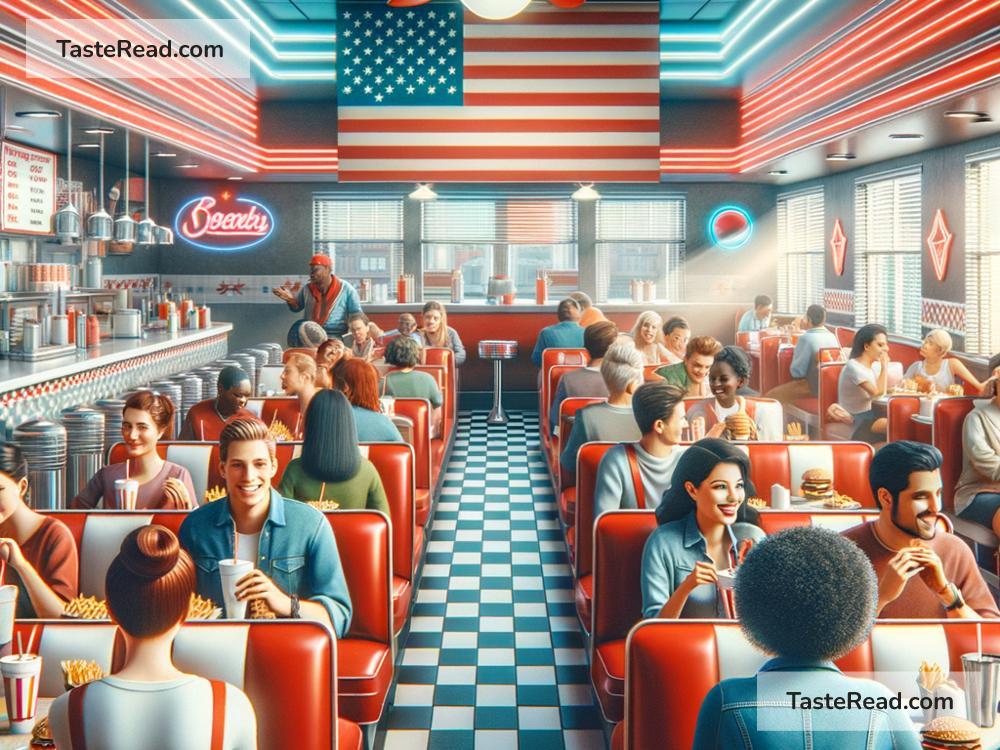The Development of American Fast Food: A Delicious Journey
Fast food has become a big part of American culture. It’s fast, convenient, and many people love it. But how did it all begin? The story of American fast food is more than just hamburgers and fries—it’s about innovation, changing lifestyles, and the influence of modern technology. Let’s take a look at how it all started and grew into what we know today.
The Early Days: Roadside Stands and Diners
The idea of “fast food” didn’t start overnight. In the early 1900s, people were just starting to get busy lives, making quick meals more important. At the same time, cars were becoming popular, and people wanted food they could get quickly while traveling. Roadside diners and food stands began popping up across the country. These places offered simple, inexpensive meals like hot dogs, burgers, and soda, which were easy to eat on the go.
One of the first fast food restaurants in America was White Castle, founded in 1921 in Wichita, Kansas. White Castle is famous for its small, square hamburgers—called sliders—that were cooked quickly and sold for just five cents each. The founders created a clean, efficient system for making food and focused on quality and affordability. This was the beginning of fast food as we know it.
The Golden Era: Drive-Ins and Franchising
The 1940s and 1950s brought big changes to the fast food industry. After World War II, America’s economy grew, suburbs expanded, and families started buying cars. With more people driving, fast food restaurants began adding drive-in service, allowing customers to order and eat without leaving their cars. This made getting food even faster!
At around the same time, the idea of franchising revolutionized the industry. Instead of running just one restaurant, business owners realized they could open multiple locations under the same name and system. McDonald’s played a huge role in popularizing this approach. Founded in 1940 by Richard and Maurice McDonald, the restaurant first served barbecue but later focused on burgers, fries, and milkshakes. In 1954, Ray Kroc joined the company and helped turn McDonald’s into a global franchise with its famous logo: the golden arches.
Other fast food chains also started during this time, including Burger King, KFC, and Taco Bell. Each restaurant had its unique menu, but they all followed the same basic ideas: serve food quickly, keep prices low, and make sure customers got the same experience no matter where they were.
Mass Appeal: Modern Families and Advertising
By the 1960s and 1970s, fast food had become part of everyday American life. Families enjoyed visiting fast food restaurants because they were affordable, kid-friendly, and fun. Many restaurants began adding indoor seating, play areas for children, and drive-thru windows for people on the move.
Fast food companies also became experts in advertising. They created catchy jingles, colorful packaging, and memorable characters like Ronald McDonald, who became the face of McDonald’s. Television commercials were used to attract kids and families, while slogans like “Have It Your Way” (from Burger King) and “Finger Lickin’ Good” (from KFC) helped customers associate certain feelings with their favorite foods.
Technology and Growth: The Fast Food Boom
As America grew more connected through highways and travel, fast food took off. Advances in technology helped restaurants make food even faster. Fryers, soda fountains, and assembly-line cooking became standard equipment. This allowed workers to cook multiple orders at the same time.
Fast food chains continued expanding across the United States and eventually around the world. By the 1980s, chains like McDonald’s, Pizza Hut, Subway, and Wendy’s were opening restaurants in other countries. They introduced American-style fast food to places like Europe, Asia, and South America. Today, these brands are recognized globally, and some have adjusted their menus to serve local tastes. For example, McDonald’s in India serves vegetarian burgers like the McVeggie to meet cultural preferences.
Health Concerns and Changes
While fast food has grown incredibly popular, it hasn’t been free of criticism. Many health experts argue that fast food is often high in calories, fat, and sugar, leading to health problems like obesity and diabetes. In response, people started demanding healthier options.
In recent years, many fast food restaurants have made changes. They now offer salads, wraps, and grilled items alongside their classic fried foods. Some chains also provide calorie information on their menus to help customers make better choices. Still, the original taste and convenience of fast food remain its strongest appeal for millions.
Conclusion: More Than Just a Meal
Fast food has come a long way since its early days. From roadside diners and drive-ins to global franchises and online delivery services, it has adapted to meet the needs of busy people everywhere. While fast food has faced challenges, it continues to thrive as a symbol of American innovation and culture.
Next time you grab a burger and fries, remember its history—it’s not just food; it’s part of a fascinating journey that reflects how life and tastes have changed over the years. The story of American fast food is really the story of America itself: fast-moving, creative, and always ready to serve.


